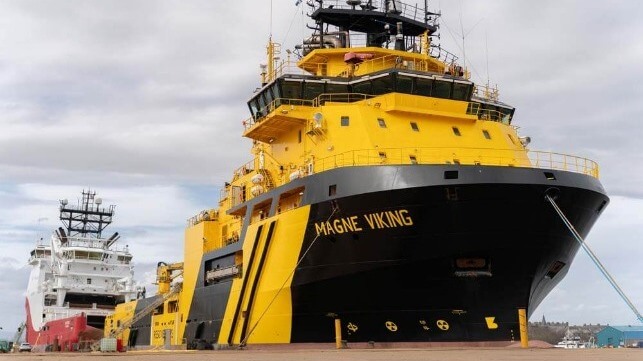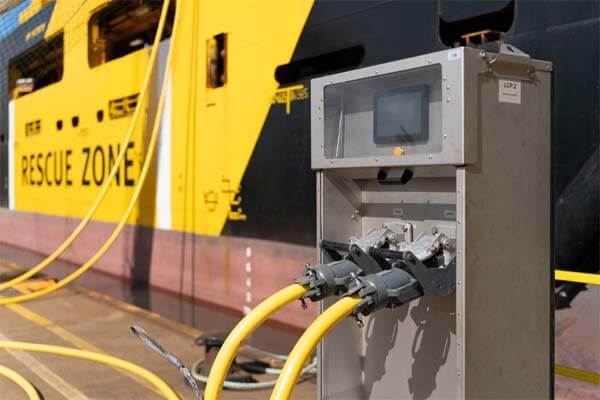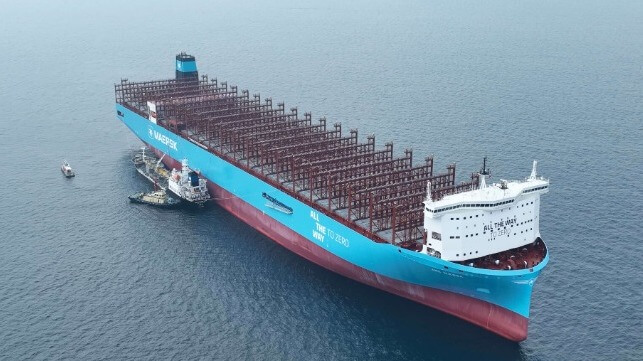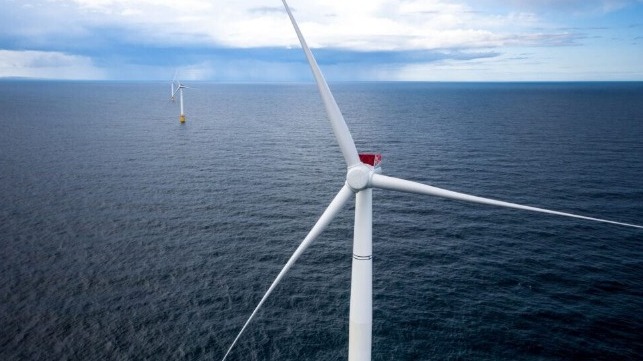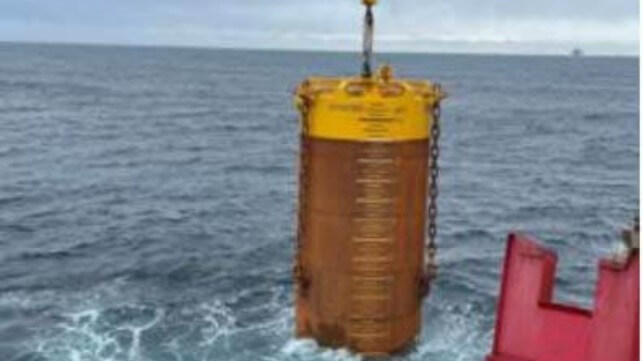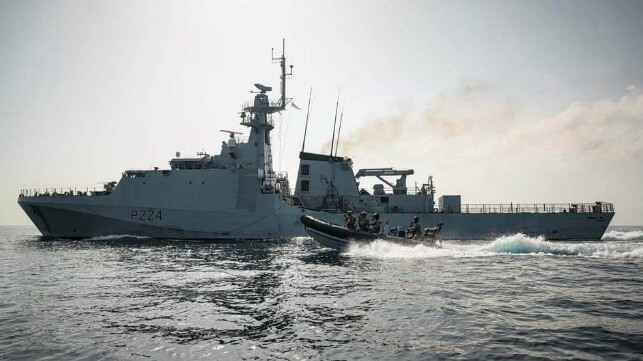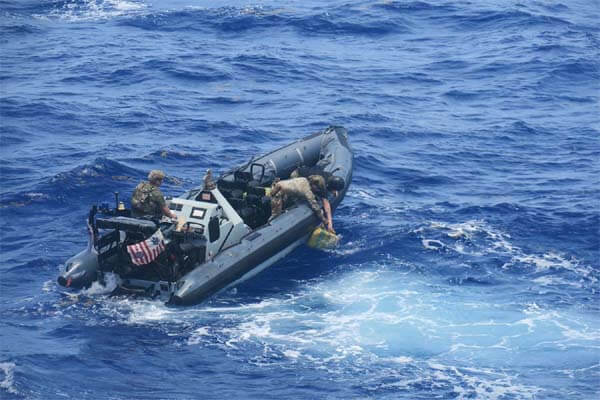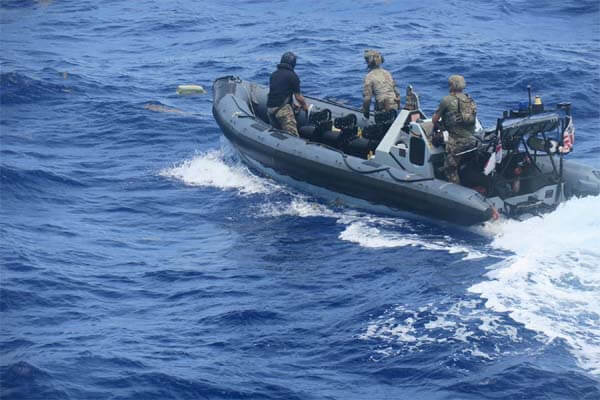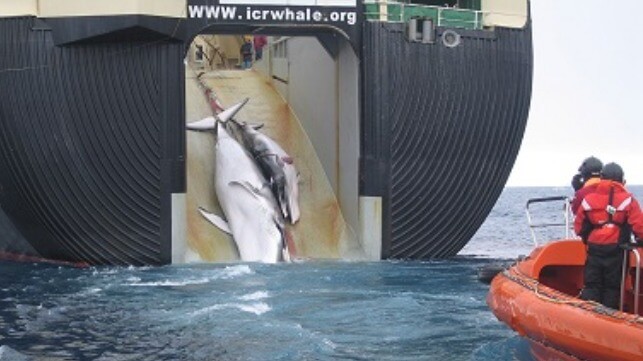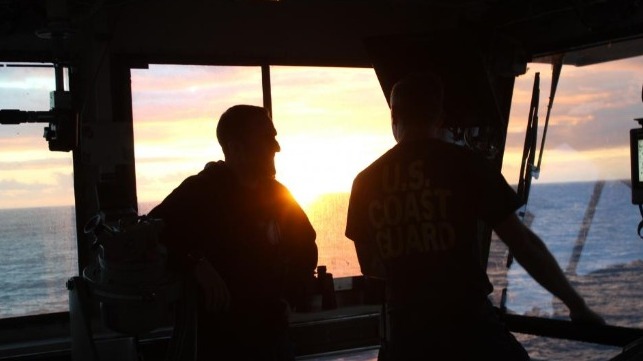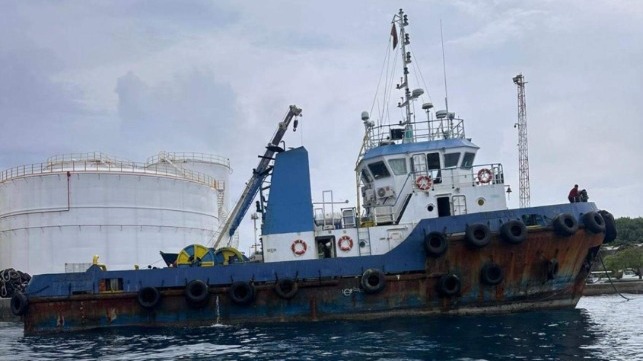Shipping company Maersk recently introduced a new 16,000-TEU, methanol-powered ship named Ane Maersk with a bridge installed near the bow. The ship is designed for maximum efficiency on the Asia-Europe trade lane. Because of its cargo capacity advantages, the house-forward design has future potential in international container ship operations between Europe and Asia as well as in trans-North Atlantic service.
Introduction
A container ship built with a forward bridge was mentioned in an article* published early in 2021 when Ulstein introduced the X-bow to ocean shipping. While unusual in layout, the X-bow promised gentler response when the bow sails directly into severe wave conditions. The 342-ft length ocean cruise ship Greg Mortimer is built with the X-bow and carries passengers on cruises in the Antarctic region. Despite being one-third the length of Ane Maersk, passengers have remarked on the gentle motion of the ship when sailing through waves.
While not the X-bow configuration, the bow above the water line of the 1145-ft length Ane Maersk is very different to the traditional bow configuration of Emma Maersk. Actual sailing experience of the X-bow in rough seas suggests that the bow of Ane Maersk would react more gently to severe waves than traditional ship bows. As a result, crew housed in the forward bridge of Ane Maersk would likely experience the motion characteristics of a ship of 500-feet in length built with a traditional bow and a bridge closer to the stern.
Suezmax Variant
The bridge across the Suez Canal restricts the maximum height of vessels that transit the waterway to 225-feet. A forward-bridge allows the vessel to be designed to carry an additional level of containers to that height behind the ship’s bridge, which could involve up to 800-additional TEU. The vessel would have a slight competitive edge sailing between major ports in Europe and Asia.
The forward bridge configuration would allow future mega-size container ships to carry in excess of 24,000-TEU, achieved by combining an additional level of containers with the ship designed and built to carry the additional width of 1-container. Fuel consumption per container would be comparable to smaller containers ship. The combination of ship length over 1000 feet and non-traditional bow design would enhance future prospects for further development of large container ships built with a forward bridge and assigned to other routes.
North Atlantic Variant
Container ships built with a low-level forward bridge could sail the North Atlantic between European as well as Western Asian ports and U.S. East Coast ports. Roadway bridges cross over shipping channels that connect to several ports on the U.S. Eastern Seaboard while tunnels pass under several channels. Westbound ships carrying over 20,000 TEU would partially offload up to five levels of containers at an east coast Canadian port, where the cargo would be transferred to ships assigned to domestic service. The projected volume of container traffic crossing the North Atlantic would justify construction of a small fleet of forward-bridge container ships for North American service.
When partially laden, the large ship would be designed to sail with a 46 foot draft as well as maximum height of 175 feet above water to American ports such as Baltimore, Norfolk, Charleston, Savannah and Jacksonville. Bridge clearance (air draft) at major U.S. East Coast ports varies between 180 feet to 215 feet at the Bayonne Bridge, near Newark. Partial offloading of westbound ships sailing to Port of Newark would likely involve transfer of three levels of containers to sufficiently reduce ship water draft to clear the channel and port terminal at Newark.
Smaller-scale variant
A smaller-scale version of the aforementioned North Atlantic variant could in the future, be designed to operate the Europe – Montreal service in response to projected increased future container trade. The concept ship could be built with a 130-foot beam by 1,000-feet length, carry three additional widths of containers and up to three additional levels of containers compared to earlier Panamax size container ships. When fully-laden, the ship would sail an ocean draft of 37 feet (38 feet in fresh water) as it approached the Port of Quebec City.
The ship would undergo a partial offloading of containers at Port of Quebec City to decrease fresh water sailing draft to 33 feet and height of forward bridge above water to 140 feet. It would sail partially laden to Port of Montreal while a tug-barge would carry the off-laden containers to Montreal. Introduction of the larger ship would require that cranes at both Ports of Montreal and Quebec extend an additional three container widths across a ship. On eastbound voyages, the vessel would load additional containers at Ports of Quebec and/or Halifax.
Variable Draft Innovations
Forward-bridge container ships intended for trans-North Atlantic sailing would need to designed from the outset to operate as variable draft vessels. The design objective would be the development of a large vessel that sails at 56-feet draft when fully laden at mid-ocean and also at 46-feet draft when partially laden. Likewise, a smaller version of the same concept would sail at 38-feet draft when fully laden at mid-ocean and at just under 33-feet draft when partially laden along the Lower St. Lawrence River. Further research would determine any need for ballast tanks when the ships sail partially laden.
Transshipment
A larger future container ship sailing to Port of Montreal would allow for transshipment of containers to smaller vessels that will sail the St. Lawrence Seaway to American ports such as Duluth and Cleveland, located around the Upper Great Lakes. For reasons of economy, a tug-barge combination could carry containers from Port of Montreal to Port of Hamilton on Lake Ontario. For eastbound sailing, the American ports would provide freight such as such as potash, oats, barley and wheat from both American and Western Canadian producers, carried to the ports inside containers by rail.
Large-scale versions of the ship sailing serving U.S. East Coast ports would stop at either Halifax or at the proposed Melford terminal, which offers 20 m channel depth and 18 m quayside depth while remaining free from ice during winter. While Halifax has restricted terminal area, the use of game changing container-transfer technology could rapidly and continuously transfer containers being unloaded at the south terminal to being loaded aboard interline transshipment vessels at the north terminal. The interline vessels could sail to such ports as Boston, Baltimore, Philadelphia or to ports located along the St. Lawrence River and Great Lakes.
Conclusions
The initiative by Maersk in commissioning the construction of a house-forward container ship that carries 16,000-TEU sets a precedent for the development future container ships that could be built to carry in excess of 24,000 TEU. Such ships could be assigned to the Asia-Europe service as well as trans-North Atlantic service.
The opinions expressed herein are the author's and not necessarily those of The Maritime Executive.
